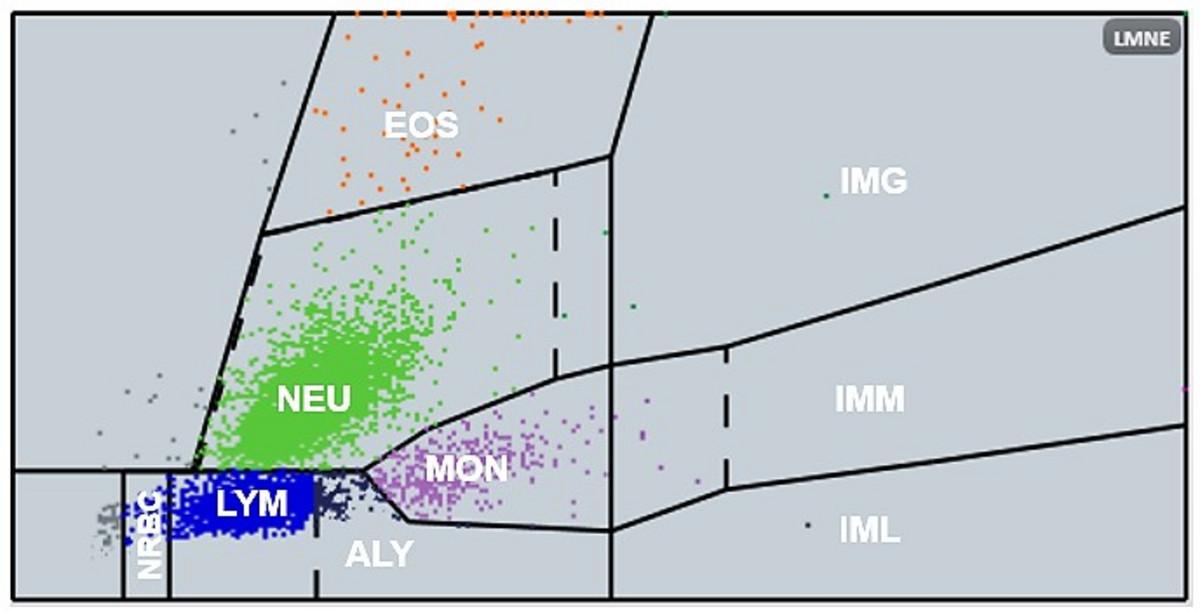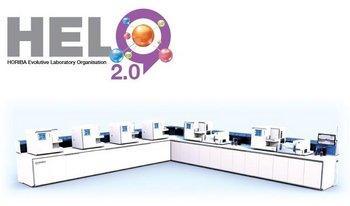Principles
The LMNE detection principle is based on the Double Hydrodynamic Sequential System "DHSS" flow cytometry. Two characteristics for each cell passing through this system are determined: volume and absorbency.
As we can see in the Fig.1 hereunder, a part of the light is absorbed by the cell content, another part is deviated by the cell structure (scattered light), and the rest passes through or around the cell. It is the light passing through the cells that is measured (optical transmission). The absorbency is determined from this optical transmission.

10 Part Diff_Differential measuremnt principles_technology_HORIBA Medical
1. The cells go through the aperture one by one to be counted and measured by electrical current (impedance changes). This is the resistive measurement.
2. Then each one crosses the light beam that arrives at a 0° angle determining the cells volume.
Results
From the absorbency and resistive measurements of the leukocytes, a matrix is developed with cell volumes on the X-axis and absorbency on the Y-axis. Study of the matrix image allows a clear differentiation of leukocyte populations.
The cell population thresholds (some of them mobiles and the others fixed) give the normal limits for the normal leukocyte morphologies. Changes in the morphology of a specific population is indicated on the matrix by a shift in the corresponding population.

Figure 2_10 Part Differential for WBC analysis_technology_HORIBA Medical
*Due to the low percentage of basophils in comparison to the rest of the leukocytes, they have a separate measurement and their own histogram.
- Lymphocyte (LYM)
- Monocyte (MON)
- Neutrophils (NEU)
- Eosinophils (EOS)
- Basophils* (BAS)
- Immature granulocytes (IMG)
- Immature medium granulometry (IMM)
- Immature low granulometry (IML)
- Atypical lymphocytes (ALY)
- Erythroblast (NRBC)
HORIBA Medical's global hematology solution HELO (and in particular the Yumizen H1500 and Yumizen H2500 hematology analyzers) is able to provide in 1 cycle and every 30 seconds (120 samples/hour), a 10 Part Diff for all differential orders.

